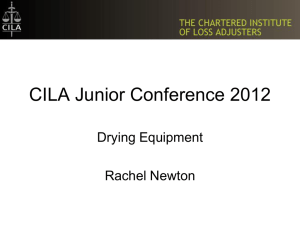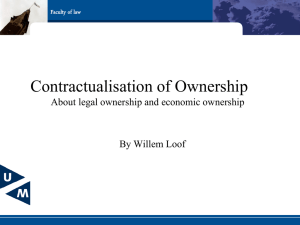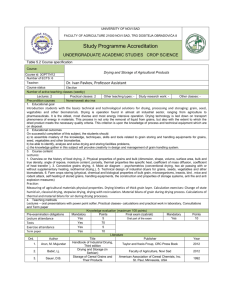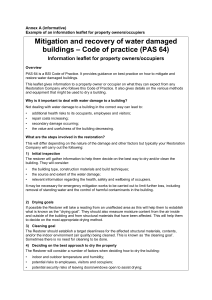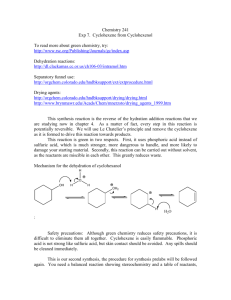Raw materials and their characterization
advertisement
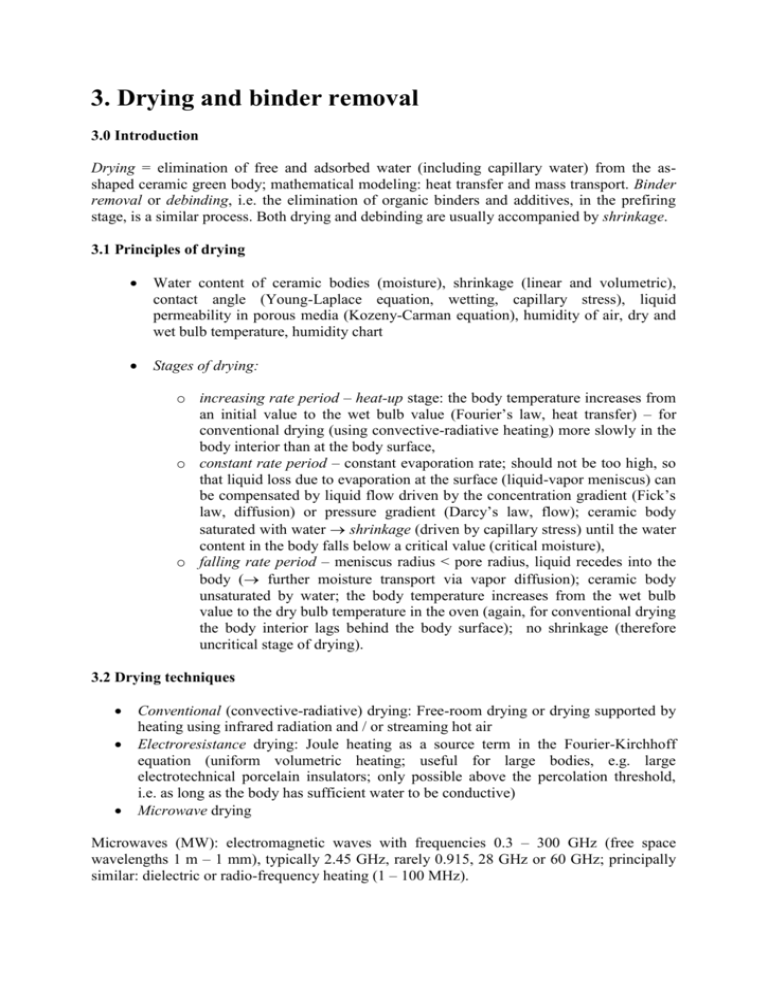
3. Drying and binder removal 3.0 Introduction Drying = elimination of free and adsorbed water (including capillary water) from the asshaped ceramic green body; mathematical modeling: heat transfer and mass transport. Binder removal or debinding, i.e. the elimination of organic binders and additives, in the prefiring stage, is a similar process. Both drying and debinding are usually accompanied by shrinkage. 3.1 Principles of drying Water content of ceramic bodies (moisture), shrinkage (linear and volumetric), contact angle (Young-Laplace equation, wetting, capillary stress), liquid permeability in porous media (Kozeny-Carman equation), humidity of air, dry and wet bulb temperature, humidity chart Stages of drying: o increasing rate period – heat-up stage: the body temperature increases from an initial value to the wet bulb value (Fourier’s law, heat transfer) – for conventional drying (using convective-radiative heating) more slowly in the body interior than at the body surface, o constant rate period – constant evaporation rate; should not be too high, so that liquid loss due to evaporation at the surface (liquid-vapor meniscus) can be compensated by liquid flow driven by the concentration gradient (Fick’s law, diffusion) or pressure gradient (Darcy’s law, flow); ceramic body saturated with water shrinkage (driven by capillary stress) until the water content in the body falls below a critical value (critical moisture), o falling rate period – meniscus radius < pore radius, liquid recedes into the body ( further moisture transport via vapor diffusion); ceramic body unsaturated by water; the body temperature increases from the wet bulb value to the dry bulb temperature in the oven (again, for conventional drying the body interior lags behind the body surface); no shrinkage (therefore uncritical stage of drying). 3.2 Drying techniques Conventional (convective-radiative) drying: Free-room drying or drying supported by heating using infrared radiation and / or streaming hot air Electroresistance drying: Joule heating as a source term in the Fourier-Kirchhoff equation (uniform volumetric heating; useful for large bodies, e.g. large electrotechnical porcelain insulators; only possible above the percolation threshold, i.e. as long as the body has sufficient water to be conductive) Microwave drying Microwaves (MW): electromagnetic waves with frequencies 0.3 – 300 GHz (free space wavelengths 1 m – 1 mm), typically 2.45 GHz, rarely 0.915, 28 GHz or 60 GHz; principally similar: dielectric or radio-frequency heating (1 – 100 MHz). Interactions of materials with MW: metals reflect MW, insulators (non-lossy dielectrics, e.g. air, glass and most ceramics at room temperature) transmit MW waves; only lossy dielectrics (at room temperature e.g. water and SiC) couple to MW and the dielectric losses (dependent on temperature, frequency and porosity or moisture content) are transformed into heat heat source term in the Fourier-Kirchhoff equation given by the MW power absorbed per unit volume. Above a critical temperature also insulators can couple with MW radiation. Mechanisms: ionic conduction (at low frequencies), dipolar rotation (at high frequencies); penetration depth: several cm (free space wavelength 12.2 cm for 2.45 GHz MW); loss factors: high for water and for SiC. Advantages: uniform volumetric heating, faster processing (factor 10), potential energy savings (up to a factor 10, especially in hybrid drying systems), better process control (but thermal runaway must be avoided) and improved product quality. However, for water contents > 5-10 % MW drying is too expensive (only 50 % of electrical input energy is converted to MW energy); at low water contents < 5 % MW drying becomes economical. MW heating can also be used for binder burnout and sintering (oxides, carbides, nitrides). 3.3 Drying problems Main problem: liquid evaporation in the constant rate period should not be too fast; otherwise the liquid flow from the interior could not compensate the liquid loss and the surface would dry and shrink preferentially stresses cracking or deformation (warping); similar problems can arise when in the body there is a gradient in moisture or particle size. Particular problems are posed by the drying of gels (hydrogels aerogels or xerogels), due to the very small particle size or polymeric structure ( Scherer’s theory of drying). Method for gel drying to obtain highly porous ( > 90 %) xerogels: supercritical drying (liquid removed above the critical point, e.g. 31 °C and 7.4 MPa for CO2). 3.4 Binder removal (debinding) Many ceramic shaping techniques (e.g. injection molding) involve a high amount of organic vehicles (so-called binders, including plasticizers, lubricants and other functional additives) binder removal is an important step before sintering; three methods: Extraction by capillary flow (wicking) by heating the green body in a packed powder bed that absorbs the molten binder, Solvent extraction by immersing the body in a liquid that dissolves only one component phase of the binder, leaving an open pore structure for subsequent burnout, Thermal decomposition (very similar to drying of moist green bodies, only at higher temperatures – several hundred °C). Complex exercise problem: Compare microwave drying and other drying techniques from the viewpoints of product size (small-large), geometry (simple-complex), water content and energy consumption. Additional explicit questions: a.) In which cases is it useful / necessary to use combined (hybrid) techniques of drying ? b.) How can microwave energy be used for burning out organic binders ? c.) Can ceramics be sintered in a microwave oven ? (If yes, how ?)

